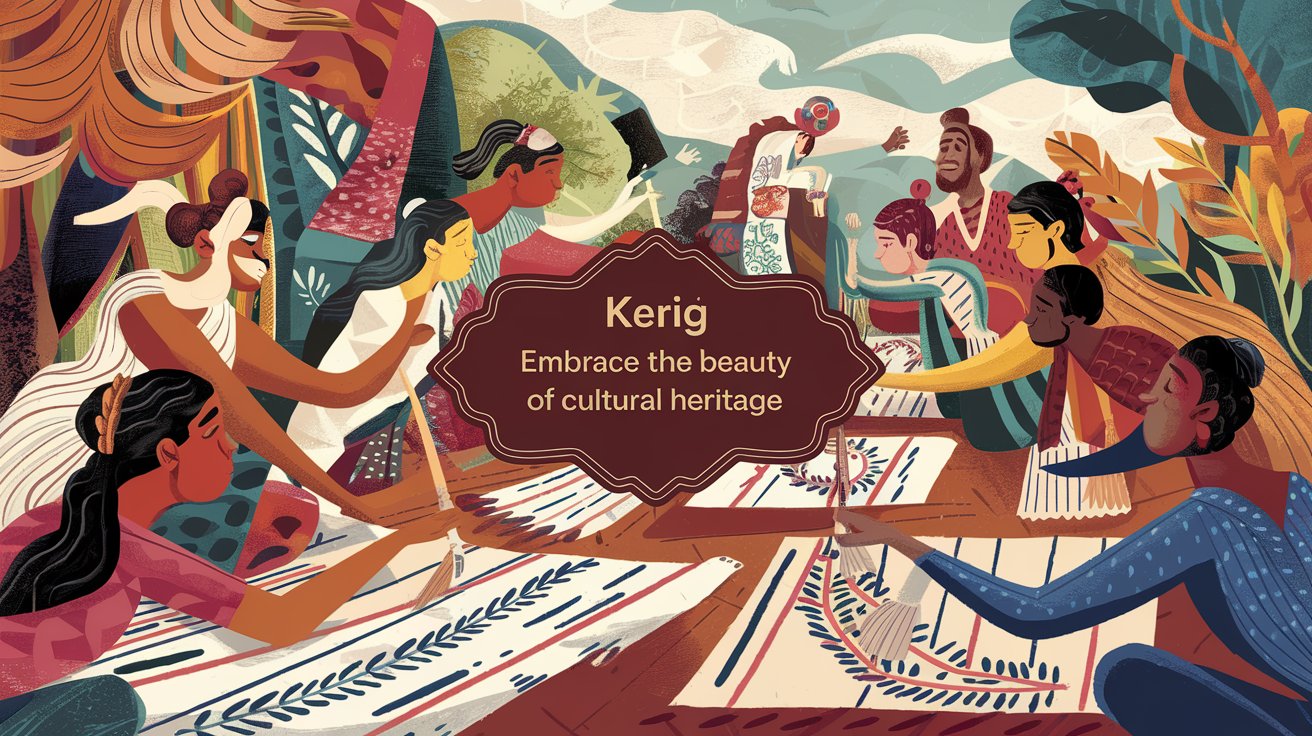Kerîg is more than just a term; it embodies a rich tapestry of tradition, identity, and cultural significance. While its origins may seem obscure to some, the concept of kerîg is deeply rooted in the heritage of various communities.
This article will delve into the essence of kerîg, exploring its historical background, cultural relevance, and its future in a rapidly evolving world.
What Is Kerîg – Detailed Note!
Kerîg, derived from the Latin term meaning “little brush,” serves as a metaphor for the delicate yet impactful strokes of cultural practices that shape communities. It represents the intricate connection between individuals and their heritage, highlighting the importance of preserving cultural identity in the face of globalization.
Historical Background of Kerîg
The origins of kerîg can be traced back to ancient traditions, where it played a vital role in everyday life. It was often used in rituals and ceremonies, symbolizing growth and the nurturing of cultural values. Understanding its historical context helps us appreciate its enduring significance.
The Evolution of Kerîg
As societies have evolved, so too has the practice of kerîg. What was once a prevalent part of daily life has transformed, adapting to modern contexts while striving to retain its core values. This evolution reflects the resilience of cultural identity amid changing landscapes.
Strategies For Revitalizing Kerîg – Let’s Explore!
Revitalizing kerîg requires proactive strategies that engage younger generations and promote active participation in cultural practices. Educational programs, workshops, and community events can serve as vital avenues for transmission of knowledge and appreciation of heritage.
Encouraging collaboration between artists, educators, and community leaders can also foster innovation, blending traditional elements with contemporary expressions to make kerîg relevant for today’s society.
What Cultural Significance Of Kerîg?
Identity and Community
Kerîg acts as a beacon of identity for many communities, fostering a sense of belonging. By engaging with these traditions, individuals connect with their ancestors, instilling a sense of pride and continuity.
Rituals and Practices
In various cultures, kerîg is integrated into rituals that mark significant life events, from birth to marriage to death. These practices are not just ceremonial; they are a means of transmitting values and stories from one generation to the next.
Artistic Expression
Kerîg is also a form of artistic expression, manifested in various art forms, crafts, and performances. This creative outlet allows communities to showcase their heritage, making it accessible and engaging for both members and outsiders.
The Role Of Kerîg In Modern Society – Take A Look!
Globalization and Cultural Exchange
In a globalized world, kerîg faces both challenges and opportunities. While the risk of cultural dilution looms, there is also a potential for cross-cultural exchange that enriches the practice. Communities can share their heritage, inviting others to participate and appreciate their traditions.
Digital Age and Preservation
The rise of digital technology offers new avenues for preserving kerîg. Online platforms provide spaces for sharing stories, showcasing artistic expressions, and educating others about the significance of these practices. This digital engagement can help keep traditions alive for future generations.
What Challenges We Are Facing Kerîg Today?
Cultural Appropriation
One of the pressing challenges is cultural appropriation, where elements of kerîg may be misrepresented or commodified by those outside the culture. It is crucial for communities to maintain control over their narratives and practices to safeguard their authenticity.
Loss of Interest
As younger generations become more immersed in modern lifestyles, there is a risk of losing interest in traditional practices. Encouraging active participation through education and community initiatives is essential for sustaining the relevance of kerîg.
What Is The Future Of Kerîg?
Revitalization Efforts
Communities are increasingly recognizing the importance of revitalizing kerîg. Workshops, festivals, and educational programs aim to engage younger generations, fostering a renewed interest in their cultural heritage.
Collaboration and Innovation
Innovative collaborations between artists, educators, and cultural leaders can breathe new life into kerîg. By blending traditional practices with contemporary expressions, communities can create a dynamic cultural landscape that resonates with a broader audience.
Closing Remarks:
Kerîg serves as a vital reminder of the importance of cultural heritage in shaping our identities. By understanding its origins, significance, and challenges, we can appreciate the role it plays in our lives and strive to preserve it for future generations.
FAQs about Kerîg:
What Does Kerîg Represent In Cultural Contexts?
Kerîg represents a profound connection to cultural heritage, identity, and community values. It embodies the practices, stories, and traditions that shape a community’s way of life, serving as a reminder of their shared history and collective memory.
How Is Kerîg Celebrated In Different Cultures?
Kerîg is celebrated through various rituals and ceremonies that mark important life events, such as births, weddings, and funerals. These celebrations often incorporate traditional music, dance, and art, providing a platform for communities to express their heritage and values.
Why Are Rituals Important In The Practice Of Kerîg?
Rituals play a crucial role in kerîg by reinforcing cultural identity and continuity. They create a sense of belonging and community, allowing individuals to connect with their ancestry and share meaningful experiences with others.
How Can Kerîg Adapt To Modern Society?
Kerîg can adapt by incorporating contemporary elements while maintaining its core values. This can involve using modern technology for storytelling, engaging younger generations through innovative programs, and collaborating with artists to create new interpretations of traditional practices.
What Challenges Does Kerîg Face Today?
Kerîg faces challenges such as cultural appropriation, which can lead to misrepresentation and dilution of traditional practices. Additionally, younger generations may feel disconnected from these traditions, posing a risk to their preservation.
How Can Communities Promote Interest In Kerîg Among Younger Generations?
Communities can promote interest in kerîg by organizing educational workshops, cultural festivals, and interactive events. By actively involving youth in these practices, communities can foster a sense of pride and encourage participation in their cultural heritage.
What Role Does Art Play In Kerîg?
Art serves as a vital expression of kerîg, allowing communities to showcase their heritage through crafts, performances, and visual arts. These artistic expressions not only preserve cultural narratives but also engage wider audiences, fostering appreciation and understanding.
How Can Digital Platforms Aid In Preserving Kerîg?
Digital platforms can aid in preserving kerîg by providing spaces for storytelling, sharing resources, and connecting communities globally. Social media, websites, and online workshops can help disseminate knowledge and engage a broader audience in cultural practices.
What Is The Significance Of Collaboration In Revitalizing Kerîg?
Collaboration among artists, educators, and community leaders is essential for revitalizing kerîg. It encourages the blending of traditional and contemporary elements, creating innovative expressions that resonate with diverse audiences and keep cultural practices alive.




